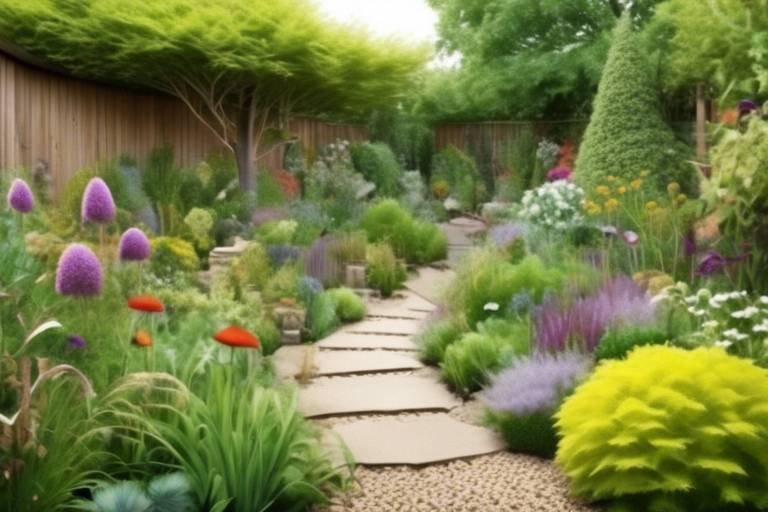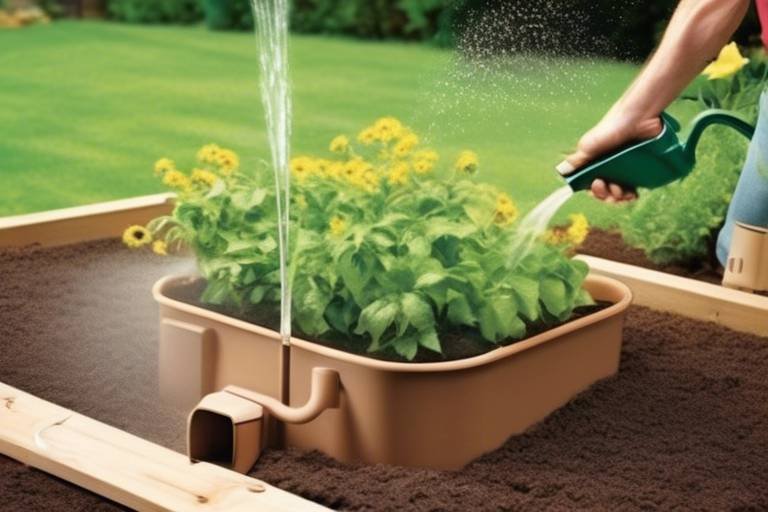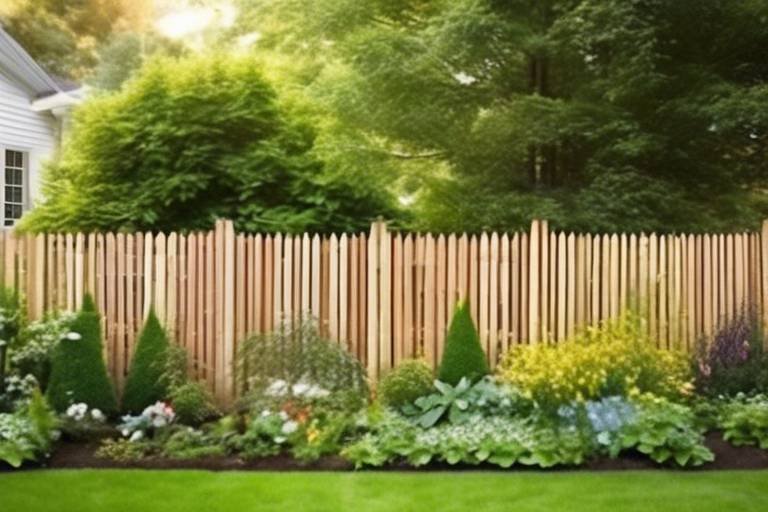How to Plant a Garden That Attracts Butterflies
Creating a butterfly-friendly garden involves more than just planting flowers - it's about creating a welcoming environment that supports the entire lifecycle of these delicate creatures. By selecting the right plants and designing your garden thoughtfully, you can attract butterflies and enjoy their beauty up close.

Choosing Butterfly-Friendly Plants
When it comes to selecting plants for your butterfly garden, it's essential to choose varieties that will attract and sustain these delicate creatures throughout their lifecycle. Nectar-rich flowers are a must-have, as they provide essential food for adult butterflies. Plants like lavender, coneflowers, and milkweed are popular choices due to their abundant nectar production.
In addition to nectar plants, don't forget about host plants for caterpillars. These are plants on which butterflies lay their eggs, and the resulting caterpillars feed on them. Including host plants like dill and parsley in your garden will attract a diverse range of butterfly species and support their entire lifecycle.
By offering a variety of plants that cater to both adult butterflies and their caterpillars, you can create a balanced ecosystem that encourages these beautiful insects to visit and thrive in your garden.

Creating a Butterfly Habitat
Creating a butterfly habitat is essential for attracting these delicate creatures to your garden. To establish a welcoming environment, consider incorporating various features that cater to the needs of butterflies. Providing a shallow water source, such as a birdbath or a small pond, allows butterflies to drink and stay hydrated. Additionally, rocks placed strategically in sunny spots create basking areas where butterflies can warm their wings and absorb essential nutrients.
Sheltered areas within the garden, such as dense shrubs or trellises, offer protection from strong winds and predators, giving butterflies a safe space to rest and seek refuge. Including a diverse range of plant heights, from low ground covers to tall flowers and shrubs, caters to different butterfly species with varying preferences for perching and feeding locations.
Creating a mix of sunny and shady spots in your garden provides opportunities for butterflies to bask in the sun and seek shade during hot weather. This variety in lighting conditions attracts a wider array of butterfly species, each with unique habitat requirements. By designing your garden with these considerations in mind, you can create a harmonious space that not only attracts butterflies but also supports their well-being.

Designing a Colorful Garden
When it comes to designing a colorful garden that attracts butterflies, it's essential to consider the visual appeal that will draw these beautiful creatures to your outdoor space. Butterflies are naturally attracted to bright and vibrant colors, so incorporating a variety of hues like red, orange, yellow, and purple can help create a visually stimulating environment that catches their attention.
One way to achieve a colorful garden is by strategically planning the layout of your plants. Consider the placement of different colored flowers throughout the space to create an eye-catching display that butterflies can easily spot. Mixing these bright hues in clusters or patterns can further enhance the visual appeal and make your garden more attractive to passing butterflies.
Additionally, choosing flowers that bloom in a range of colors and shades can ensure that your garden remains colorful throughout the seasons. By selecting plants that bloom at different times of the year, you can provide a continuous source of food for butterflies and maintain a visually appealing garden that is always in bloom.
Remember to also consider the foliage of your plants when designing a colorful garden. Some butterfly species are attracted to specific types of leaves, so incorporating a variety of textures and shapes can add depth and interest to your garden while also attracting a diverse range of butterfly species.

Ensuring Year-Round Blooms
Ensuring year-round blooms in your butterfly garden is essential to provide a continuous food source for these beautiful creatures. By carefully selecting a variety of flowers that bloom at different times of the year, you can create a vibrant and inviting space that attracts butterflies throughout the seasons.
One way to achieve year-round blooms is to include early spring bloomers such as crocus, daffodils, and primroses. These flowers provide much-needed nectar for butterflies emerging from hibernation and kickstart the butterfly season in your garden.
As the weather warms up, summer favorites like bee balm, zinnias, and black-eyed Susans can take center stage, offering a feast for visiting butterflies. Their bright colors and sweet nectar are irresistible to these winged visitors, adding a lively touch to your garden.
Transitioning into fall, consider planting asters, sedum, and goldenrods to keep the butterfly buffet going. These late bloomers provide sustenance for butterflies preparing for winter or migrating to warmer climates, ensuring your garden remains a welcoming oasis until the last days of autumn.
By planning your garden layout with a mix of early, mid, and late blooming flowers, you can create a dynamic and ever-changing landscape that supports butterflies throughout the year. Observing the seasonal shifts in butterfly activity can be a rewarding experience, highlighting the importance of providing year-round blooms in your butterfly-friendly garden.

Providing Larval Host Plants
When creating a butterfly-friendly garden, it's essential to not only focus on nectar-rich flowers but also provide specific larval host plants for caterpillars. These host plants play a crucial role in supporting the entire lifecycle of butterflies, from egg to adult. By including a variety of host plants in your garden, you can attract a diverse range of butterfly species and contribute to their conservation.
One popular example of a larval host plant is milkweed, which is essential for monarch butterflies. Monarchs lay their eggs exclusively on milkweed plants, and the caterpillars feed on the leaves as they grow. By planting milkweed in your garden, you can create a safe haven for monarch butterflies and help increase their population.
Another common host plant is parsley, which attracts swallowtail butterflies. These butterflies lay their eggs on parsley, and the caterpillars rely on this plant for food. Including parsley in your garden not only supports swallowtail butterflies but also adds a decorative and edible element to your outdoor space.
It's important to research the specific host plants that cater to the butterfly species in your region. Different butterflies have unique preferences for host plants, so diversifying your garden with a variety of options can attract a wider array of butterflies. By providing larval host plants alongside nectar-rich flowers, you can create a balanced ecosystem that supports the complete life cycle of butterflies.

Creating a Butterfly-Friendly Environment
Creating a butterfly-friendly environment in your garden is essential to attract and support these delicate creatures throughout their lifecycle. By adopting practices that prioritize their well-being, you can enjoy the presence of butterflies while contributing to their conservation.
One crucial aspect of creating a butterfly-friendly environment is to avoid using pesticides in your garden. These chemicals can be harmful to butterflies at all stages of their life cycle, from egg to adult. Instead, opt for natural pest control methods such as introducing beneficial insects or using organic gardening practices to keep pests in check without endangering butterflies.
Additionally, providing a variety of native plants in your garden can help create a diverse and sustainable habitat for butterflies. Native plants are well-suited to the local climate and soil conditions, making them ideal food sources for butterflies. By planting a mix of nectar-rich flowers and host plants, you can attract a wide range of butterfly species and support their breeding and feeding needs.
Creating sheltered areas in your garden, such as dense shrubs or butterfly houses, can offer protection from harsh weather conditions and predators. Butterflies seek out safe and secure spots to rest and roost, so incorporating these features can make your garden more inviting to them.
Furthermore, maintaining a clean and tidy garden can help create a safe environment for butterflies to thrive. Remove any debris or clutter that could harbor pests or predators, and regularly inspect plants for signs of disease or infestation. By keeping your garden healthy and well-maintained, you can ensure that butterflies have access to the resources they need to flourish.
Overall, creating a butterfly-friendly environment involves thoughtful planning and consideration of the needs of these beautiful insects. By cultivating a garden that prioritizes their well-being, you can enjoy the beauty of butterflies while making a positive impact on their conservation.

Attracting Butterflies with Scent
When it comes to attracting butterflies to your garden, scent plays a crucial role in drawing these delicate creatures towards your outdoor space. Incorporating fragrant flowers like jasmine, lilac, and phlox can create an irresistible aroma that entices butterflies to visit and linger in your garden.
Imagine walking through your garden and being enveloped in the sweet fragrance of blooming flowers, only to look up and find colorful butterflies fluttering around, drawn in by the alluring scents. It's like creating a sensory paradise that not only pleases your nose but also delights your eyes with the graceful dance of butterflies.
Strategically placing these scented flowers near seating areas allows you to not only enjoy the visual beauty of butterflies but also bask in the delightful aromas they bring. Picture yourself relaxing on a bench surrounded by the gentle buzz of pollinators and the soothing scent of fragrant blooms, creating a tranquil oasis in your own backyard.
Moreover, by incorporating a variety of scented plants in your garden, you can cater to different butterfly species with varying scent preferences. Some butterflies are particularly attracted to the sweet aroma of jasmine, while others may prefer the floral notes of lilac or the earthy scent of phlox. Providing a diverse range of scents ensures that your garden appeals to a wide array of butterfly visitors.

Observing and Enjoying Butterfly Visitors
Once your butterfly-friendly garden is established with the right plants and habitat features, it's time to sit back, relax, and watch the magic unfold. Imagine yourself in a cozy outdoor nook, sipping a cup of tea while colorful butterflies gracefully flutter around you. As you observe these enchanting creatures, take note of their unique markings, flight patterns, and behaviors. Each species has its own charm and personality, adding a delightful touch to your garden.
Consider setting up a comfortable seating area strategically placed near your butterfly-attracting plants. This way, you can have a front-row seat to nature's beauty show. Picture yourself surrounded by a kaleidoscope of fluttering wings, a living masterpiece that brings joy and tranquility to your outdoor space.
Keep a journal or notebook handy to record your butterfly sightings and interactions. Note down the species you see, the time of day they visit, and any interesting behaviors you observe. Over time, you'll develop a deeper appreciation for these winged wonders and gain valuable insights into their preferences and habits.
Invite friends and family to join you in your butterfly-watching sessions. Share your knowledge and passion for these delicate creatures, sparking curiosity and admiration in others. Create lasting memories as you bond over the shared experience of witnessing nature's beauty up close.
As you immerse yourself in the world of butterflies, take time to reflect on the interconnectedness of all living things. Marvel at the intricate dance of pollination, the delicate balance of ecosystems, and the sheer wonder of life in its myriad forms. By observing and enjoying butterfly visitors in your garden, you become part of a larger tapestry of existence, woven together by the threads of nature's grand design.
Frequently Asked Questions
- What are the best plants to attract butterflies to my garden?
Choosing nectar-rich flowers such as lavender, coneflowers, and milkweed is ideal for attracting adult butterflies. Including host plants like dill and parsley can also attract caterpillars.
- How can I create a suitable environment for butterflies in my garden?
Creating a butterfly-friendly habitat involves providing features like a shallow water source, rocks for basking, and sheltered areas for protection. Offering a mix of sunny and shady spots with varying plant heights can attract a diverse range of butterfly species.
- Why is it important to have year-round blooms in a butterfly garden?
Planting a variety of flowers that bloom at different times of the year ensures a continuous food source for butterflies. Including early spring bloomers, summer favorites, and fall-flowering plants can support butterflies throughout the seasons.
- How can I support the entire lifecycle of butterflies in my garden?
In addition to nectar plants, including specific host plants that caterpillars feed on is crucial. For example, planting milkweed can support monarch butterflies from egg-laying to adulthood.
- What practices should I follow to maintain a butterfly-friendly environment?
Avoiding pesticides and opting for natural pest control methods is essential to protect butterflies at all stages of their life cycle. Embracing organic gardening practices can help maintain a healthy environment for these beautiful creatures.
- How can I attract butterflies with scent to my garden?
Including fragrant flowers like jasmine, lilac, and phlox can attract butterflies with their enticing scents. Positioning these plants strategically near seating areas allows you to enjoy both the visual beauty and aromatic allure of butterflies.
- What should I do once my butterfly garden is established?
Take time to observe the different butterfly species that visit your garden. Keeping a journal of sightings and behaviors can help you learn more about these fascinating creatures and appreciate the beauty they bring to your outdoor space.



















